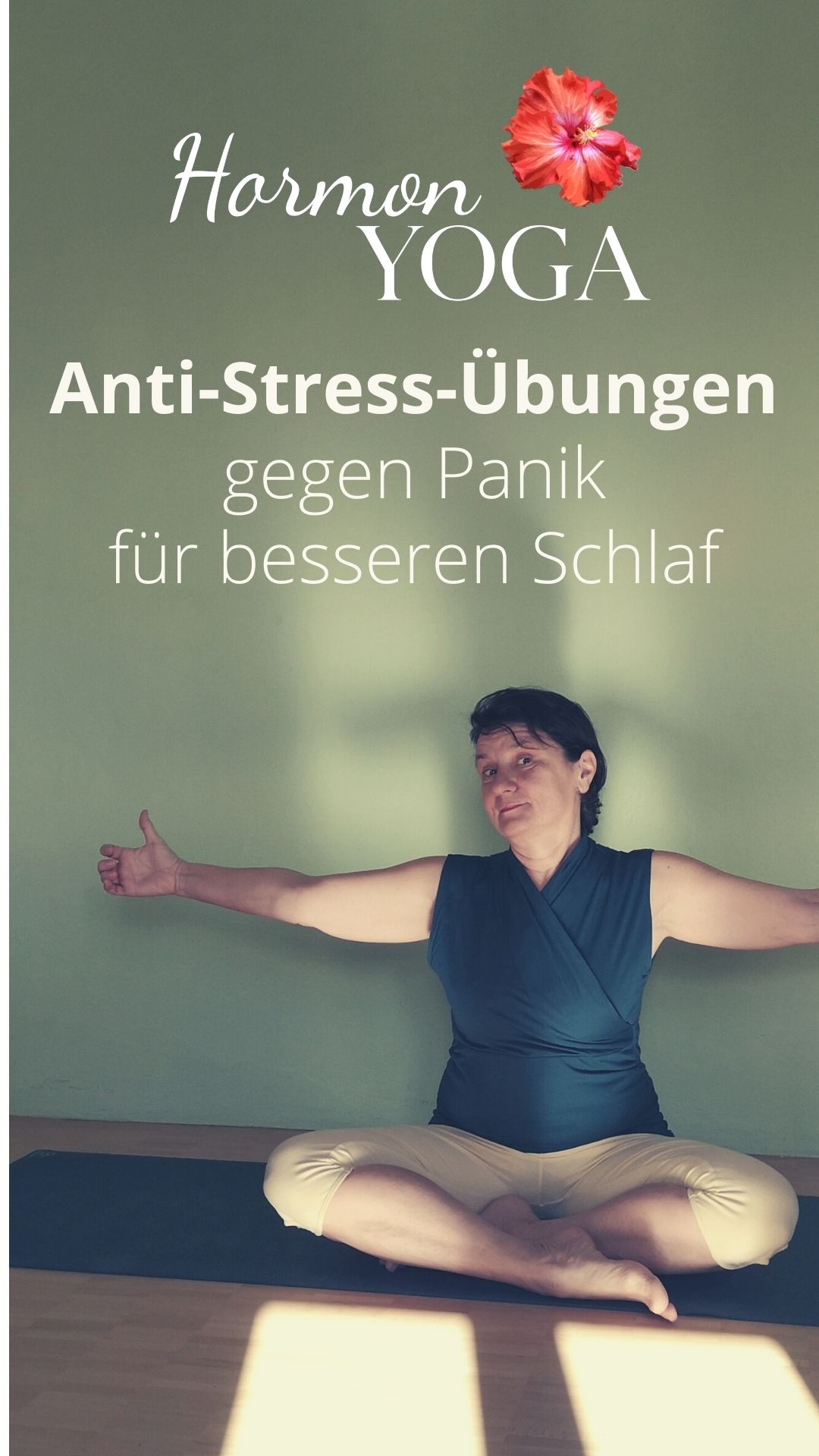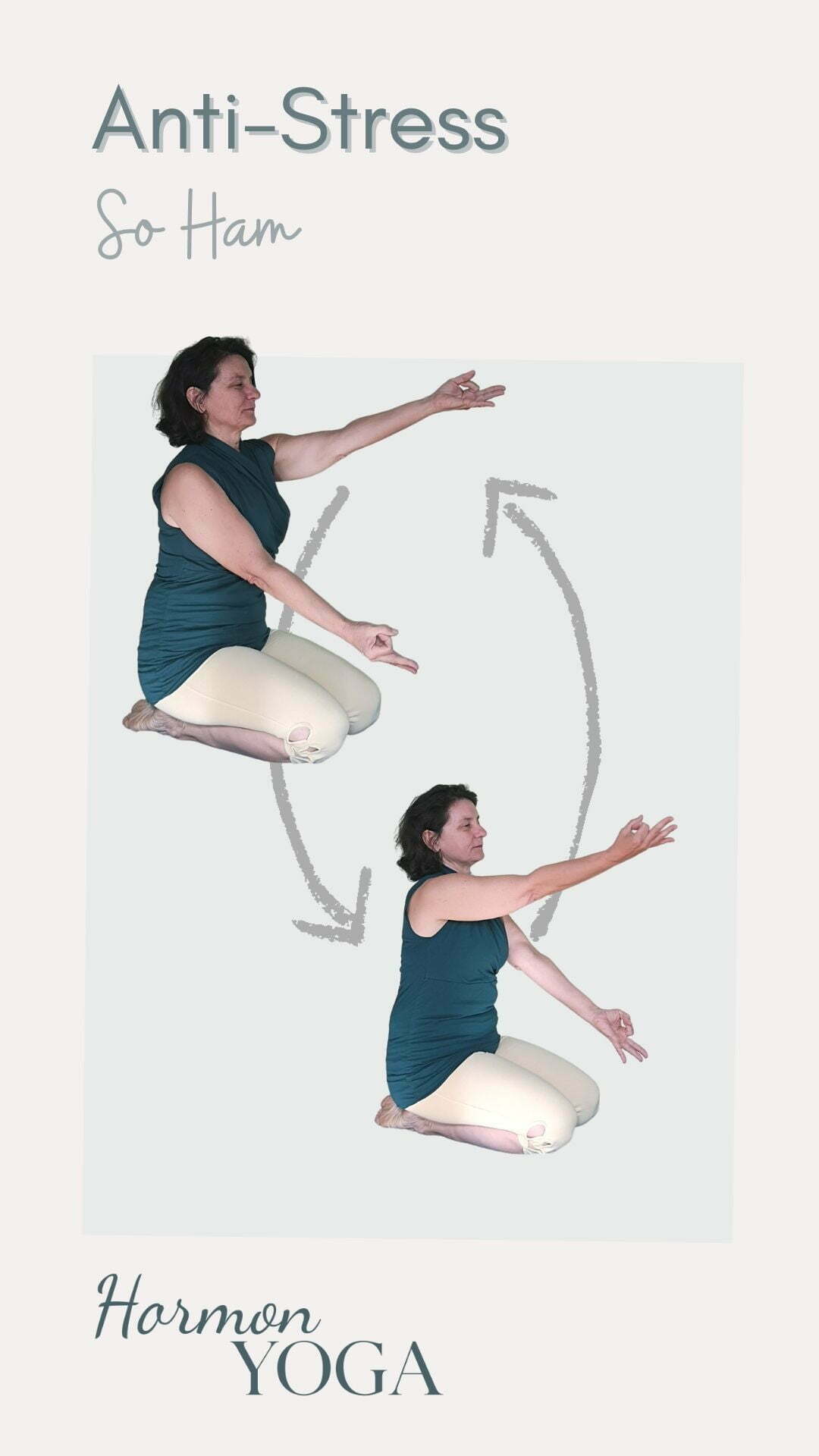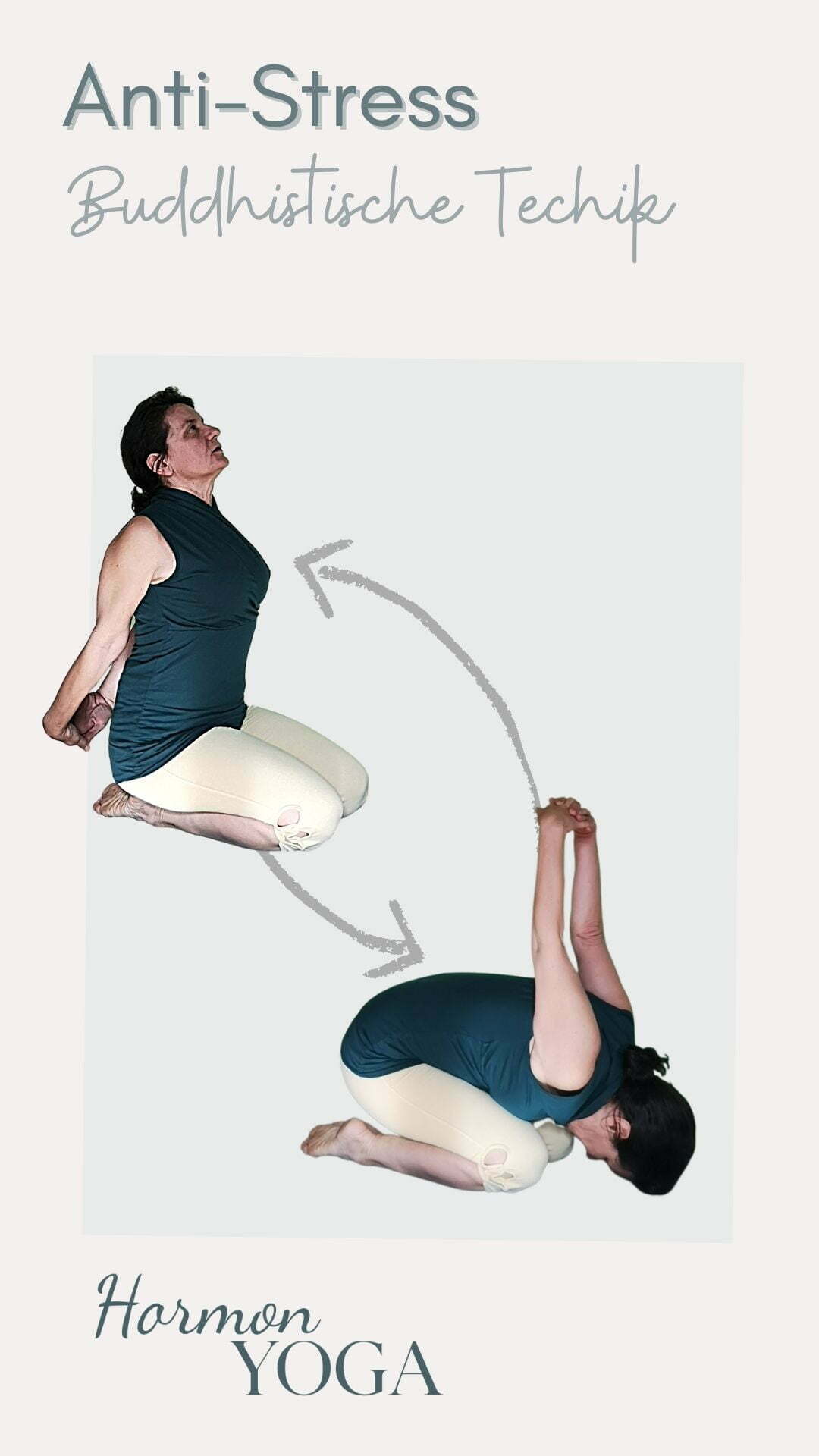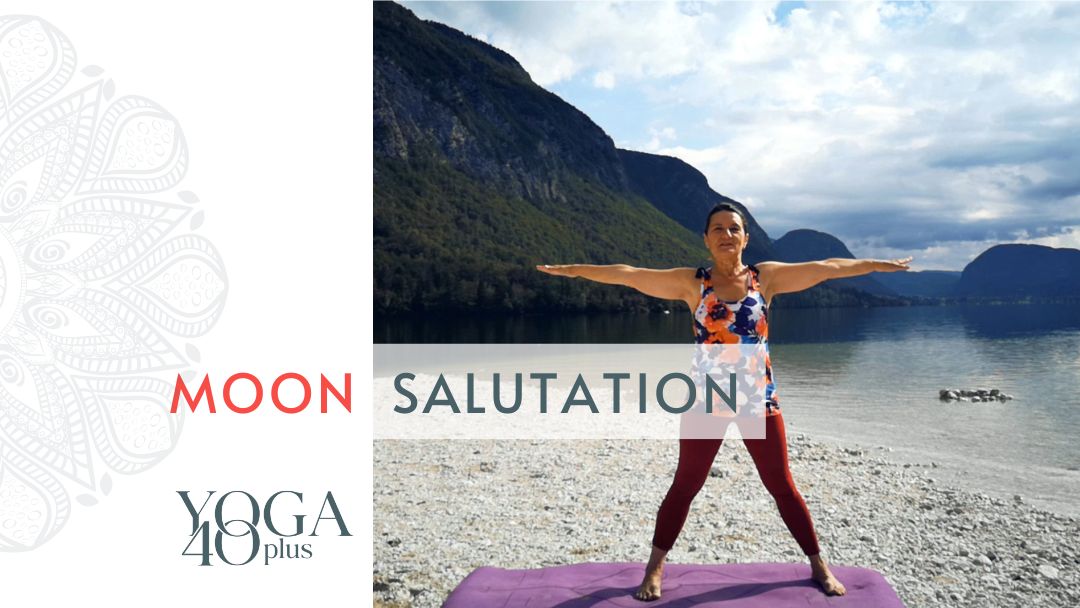Anti-Stress Exercises
I am pleased to introduce you to a few anti-stress exercises as practised in hormone yoga tought by Dinah Rodrigues.
In her teaching, every hormone yoga class ends with a relaxation sequence calming your system and giving your glands the peace to produce hormones. The anti-stress exercises of course also help to reduce the feeling of stress in a more general way, to relieve sleeping disorders and panik attacks.
Why do anti-stress exercises “work” and how to pratise them? Let’s have a look at it.

Pictures are taken in Camelia Park, Locarno, Ticino, Switzerland (February 2022)
How does an anti-stress exercise work?
Daily life requires action, focus, reactivity. Our body produces hormones to keep us alert and allow us to deal with regular but small stress situations. However, if these occur too often or if the stress situations are long lasting, we feel “stressed” and later “burned out”. Read How stress hormones affect your body, to learn more about it.
With the anti-stress-exercises you activate calming energies and balance the vegetative nervous system, also called autonomous nervous system which controls blood pressure, heart rates, digestion, body temperature, and sexual drive, among others.
The anti-stress exercises usually follow breathing exercises, equalizing the flow of air and blood, take you into a meditative but still awakend state helping to bring back the metabolism to its normal pace.

Anti-stress exercises practise
While Meditation, Yoga Nidra and Pranayama take your mind on an inner journey, the anti-stress exercises include your body.
I love practising them, as they combine inner peace with movement and often also tell a story, like the salt-shaker where you add spice to your life. Or So Ham, which means “I am”, I am perfect as I am, I am part of the universe: I take whatever belief feels good for me today and add a movement to it.
So Ham
Sit on your heels (or on a chair), spine upright, tip of forefinger touching the thumb base (closed Jnani Mudra) with both hands. Open your stretched arms diagonally, on a 45° slope, palms facing up. When you start one arm is up and the other down.
Inhale and exhaling sing SO, without moving your arms and then sing HAM (hum) interchanging the arms position (lower the position of the higher one, raise the other arm at the same time). Control the movement of the arms, making it correspond with the end of exhaling.
To end the exercise, bring down the arm that is raised. Feel the energy entering through your arms.
Peace of Mind, Buddhist Technique
Sit on your heels (if you can’t, sit with legs crossed and your back straight), hands interlaced behind you, arms stretched out, expanding your chest. Semi-closed eyelids. Observe your natural breathing and don’t interfere. Start counting your breathings:
1 – Inhale, forward bend, raising arms
2 – Exhale, come back up, lowering arms.
Repeat the sequence, counting till 10, with no haste, natural and tranquil breathings.
Remain upright, again count: inhaling 1, exhaling 2 and so on till 10, but this time without movement.
The sequence may be repeated as many times as you wish.
Back and back
Sit with your back straight and the arms stretched out horizontally to the sides. Curl the fingers without reaching the palms with the fingertips, keep the thumbs extended.
1- Inhale: Circle the arms, pushing the thumbs up and back, open the abdomen.
2- Exhale: rotate thumbs forward, down and back, draw in belly.
This exercise affects your mood; it eliminates fear and insecurity. It also relaxes the shoulders and activates the pituitary gland.

Wrap up
Anti-stress exercises are a dynamic meditation, where mind and body get one. Your mind observes the body and the body follows the mind.
Simple exercises are the most difficult, because the body soon repeats the flow without need to involve the mind. That’s why counting is involved, e.g. your breath or your fingers, to keep the mind in the present calm flow.
This stillness then slowly regulates the flow of your autonomous nervous system, which by definition can’t be steered by the mind. You can “fight” stress only with peace and calm within you.










Trackbacks/Pingbacks